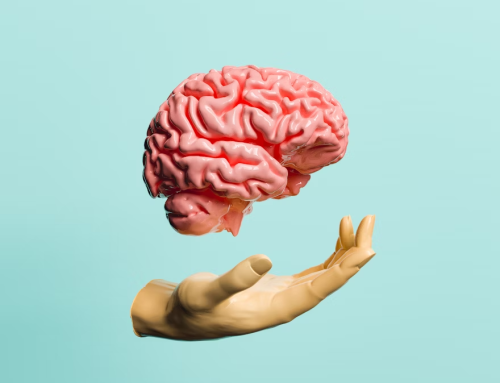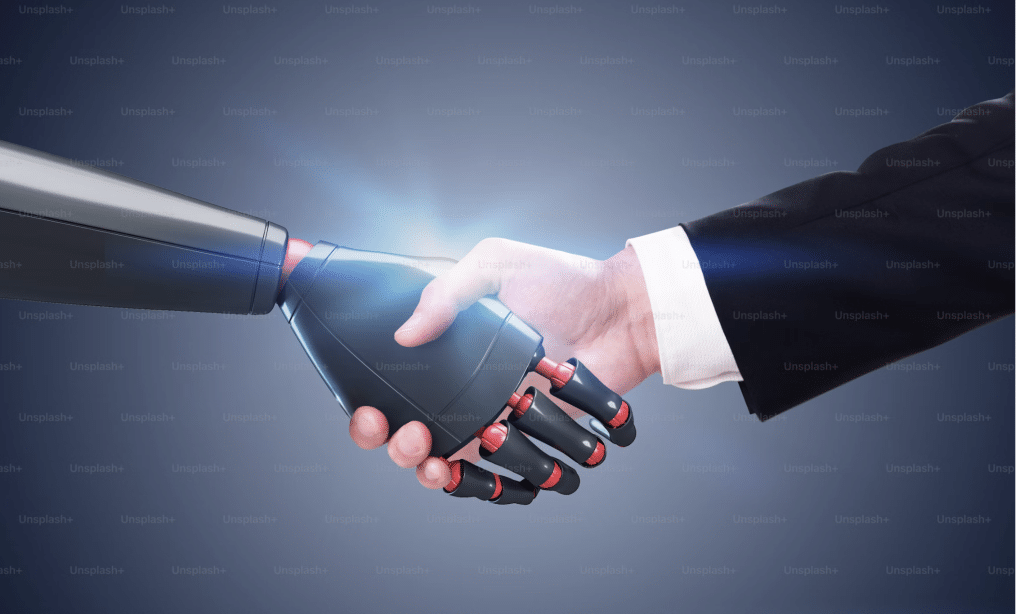
We’re well past the era of “AI can write captions” stories. In 2025, AI is woven into the mechanics of marketing: autonomous agents test and optimize in real time; multimodal systems create synchronized assets across video, voice, and AR; search engines surface AI summaries that change how audiences discover content. Those advances matter — but they do not neutralize the human role. Instead, they shift it.
The clearest truth about modern marketing is this: the brands that win will be those that treat AI as a collaborator — an always-on creative partner that multiplies human judgment, not replaces it. This article argues for a practical, operational model of human-AI collaboration and shows how to build it into strategy, workflows, governance, and measures of success.
What’s changed in 2025 — and why collaboration matters
Two developments are reshaping marketing today. First, AI has become more agentic: systems can now autonomously run campaign loops, reallocate budgets, and personalize creative at scale. Marketers no longer merely prompt models; they supervise and direct semi-autonomous agents that act on their behalf. This shift is visible across industry conversations about AI agents moving from copilots to semi-autonomous actors in marketing operations. Forbes+1
Second, the discovery landscape is changing: AI-first search and conversational summaries mean fewer users click through to brand sites. If you’re not present in the AI-mediated pathways where people learn about solutions, you risk invisibility. Recent analyses show that AI summaries reduce link clicks in search results, underscoring the need to design for AI-mediated discovery, not just web pages. Pew Research Center
These shifts create a paradox: AI gives us the tools to produce more, faster, and cheaper — but the flood of content increases sameness. Here, human-led distinction — voice, empathy, cultural judgment, strategic risk-taking — becomes the differentiator. That’s the essence of collaboration: machines for scale, humans for meaningfulness.
Collaboration in practice: a working model
Think of AI as the orchestra and humans as conductors who choose the score, tempo, and emotional shape. A practical human+AI collaboration cycle looks like this:
- Human: Define the narrative & constraints. Set the brand thesis, cultural frame, ethical boundaries, and high-level KPIs.
- AI: Rapidly prototype variants. Agentic systems spin hundreds of creative permutations—different hooks, cuts, and localizations—so humans have a rich set of options.
- Human: Curate for meaning. Select concepts that carry emotional truth and brand voice; elevate the few that deserve investment.
- AI: Test and optimize at scale. Run micro-experiments across segments, platforms, and formats. Agents surface winners and signal where humans should intervene.
- Human: Interpret, contextualize, and decide. Apply cultural, ethical, and reputational judgment to scale winners or kill problematic directions.
- Governance loop: Humans audit outputs for bias, IP risk, and disclosure; governance policies iterate alongside creative learning.
This is not linear; it’s iterative. The human role amplifies where machines are weakest: choosing which idea has gravitas, spotting cultural misfires, and deciding whether an immediate win is worth long-term brand risk.
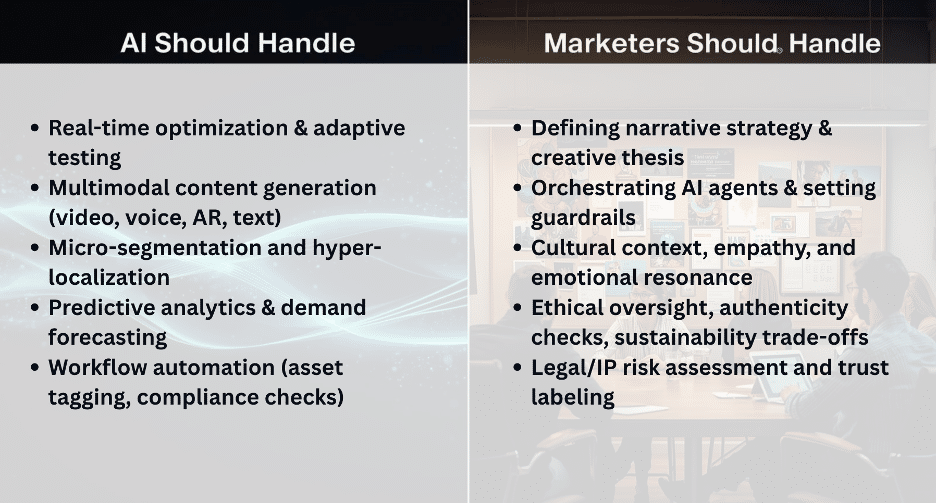

Real 2025 moves that prove the point
Several recent industry moves illustrate that leading organizations are positioning AI as an amplifier of human creativity and judgment:
- Major AI companies are pitching models as tools for amplifying thought rather than replacing it — a trend reflected in recent brand positioning campaigns that emphasize AI as a collaborator, not a substitute for human judgment.
- Platform owners are launching agentic creative assistants that automate production while embedding guardrails (e.g., watermarking, moderation), highlighting the need for human oversight even as automation scales. Amazon’s Creative Studio additions are a clear example.
- The discovery economy is changing: empirical work shows users encountering AI summaries click through less often, which forces a recalibration of content and distribution strategies for brands that want to be “visible” to AI intermediaries.
These developments collectively show the same point: systems accelerate the “how,” humans must own the “why.”
Where collaboration prevents brand harm
AI can amplify scale, but it can also amplify mistakes. The recent use of AI-generated talent in ads produced uncanny, ethically fraught outcomes that required public explanation and retraction — a reminder that authenticity remains scarce and valuable. Human reviewers catch the cultural, ethical, and reputational risks that agents will miss unless explicitly taught to prioritize them.
At the same time, environmental scrutiny of always-on AI has become material: data-center energy and water use is under public and regulatory attention, which should shape creative choices about production volume and asset reuse. Human teams must weigh creative ambition against sustainability trade-offs.
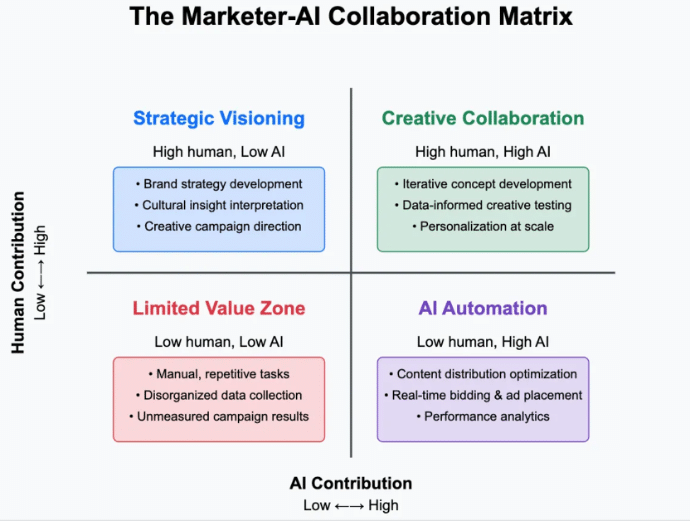
Organizational shifts to enable collaboration
Adopting true collaboration requires structural changes:
- New hybrid roles — Creative Conductor, AI Curator, Empathy Lead, and Brand Ethicist — who bridge art, data, and governance.
- Creative governance — Light, timely review processes that balance speed with ethical and brand safety checks.
- Training & rituals — Regular co-creation sprints where creatives and engineers iterate together; “post-mortems” that capture lessons beyond metrics.
- Incentives — Reward long-term brand equity and emotional resonance alongside short-term conversion KPIs.
These changes make the human contribution explicit and measurable, rather than implicit and assumed.
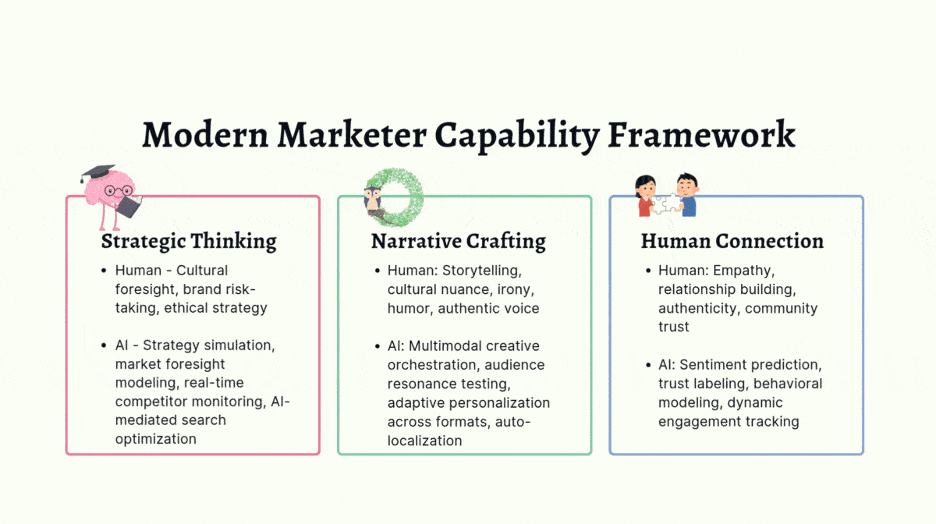
Measures that reflect collaboration, not just automation
When AI does the heavy lifting, the metrics that matter must shift too. Alongside efficiency and conversion metrics, track:
- Emotional impact: surveys and qualitative feedback that measure resonance and recall.
- Trust signals: transparency scores, disclosure rates, and audience trust metrics.
- Cultural accuracy: incidents or flags related to misrepresentation or stereotyping.
- Sustainability footprint: compute water cost per campaign and asset reuse rates.
- Creative novelty: internal scoring or expert panels that rate originality and risk.
These measures center the human outcomes of marketing — connection, trust, and cultural fit — while still leveraging AI’s ability to scale and optimize.
The invitation: lead the collaboration
If you are a marketer today, shift your conversation with AI from “what can I offload?” to “what can I amplify?” Start by auditing the parts of your workflow where AI already acts, then codify the human decision points that must remain. Create rapid experiments that make the human role visible: run an agentic test but require a human “artist’s note” for the version that scales; track both clicks and emotional recall.
Because in the world of capable machines, human creativity isn’t diminished — it’s now the axis on which brand distinction spins. AI can produce a hundred plausible executions. Humans choose the one that matters.
Human + AI is not a compromise. It’s a superpower — if we design it that way. Treat AI as your collaborative instrument: train it, test it, govern it, and then use your uniquely human strengths to make the music.


